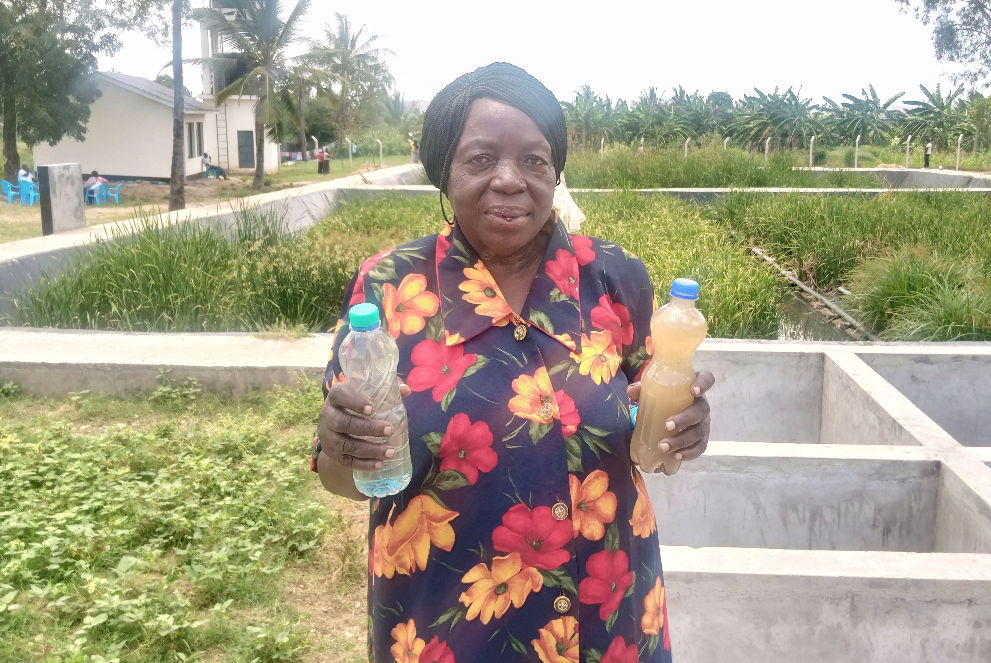
 Pamela Achieng, a resident of
Runyu village in Mikindani, Mombasa
county /KNA
Pamela Achieng, a resident of
Runyu village in Mikindani, Mombasa
county /KNA
The United Nations Environment Programme has officially handed over the Mikindani wastewater treatment plant to the local community in Runyu village, Mombasa County, marking a major milestone in wastewater management and environmental conservation.
Chief of Marine and Coastal Ecosystems Division, Sinikinesh Jimma said the facility is a nature-based solution that addresses social, economic and environmental challenges.
“The plant collects wastewater from Mikindani and treats it using natural processes. It relies on gravity flow and solar pumps, making it cost effective and sustainable for community management. Beyond treatment, the project provides clean water for irrigation and creates opportunities for local households, especially women, to engage in farming,” she said.
Residents of Runyu village described the project as transformative. Community development chairman, Peterlis Omondi, said the wetland has improved sanitation and reduced waterborne diseases.
“Before the project, our environment was polluted with stagnant water and foul smells. Malaria and diarrhoea were common and people were leaving. Today, these health problems have drastically reduced and the community has regained dignity. Treated water is now being used for farming and more people are moving here to settle,” Omondi said.
Pamela Achieng, a local resident said the project has enhanced food security and access to water.
“Previously, no one wanted to buy food from this area. Now buyers come from as far as Mikindani estate. We also struggled to acquire water, but this project has given us easier access,” she said.
Mombasa county director of Nema, Fanuel Mosago said the project supports compliance with the Water Quality Regulations of 2024.
“Wastewater from Mikindani is treated before it is released to the environment. This initiative serves as an example for replication across Mombasa. It benefits the community socially, economically and environmentally,” he said.
The wetland system combines anaerobic baffled reactors with vertical and horizontal flow wetlands, mimicking natural purification before discharging clean water into Tudor Creek.
Funded by the European Union, the facility benefits 40,000 residents, supports irrigation for 50 farms and contributes to the restoration of mangroves and fisheries habitats.
The project contributes to Kenya’s commitments under Sustainable Development Goal 14.2, which seeks to protect marine and coastal ecosystems and SDG 15.5, which focuses on halting biodiversity loss and preventing the extinction of threatened species.
Residents have been actively involved through training, clean-up drives and awareness sessions, fostering local ownership.
The Mikindani wetland is part of the Go Blue project, a joint initiative by the European Union, the government and six coastal counties namely Mombasa, Kilifi, Kwale, Lamu, Taita Taveta and Tana River.
The programme promotes sustainable blue economies by creating jobs, protecting ecosystems, and improving livelihoods.












